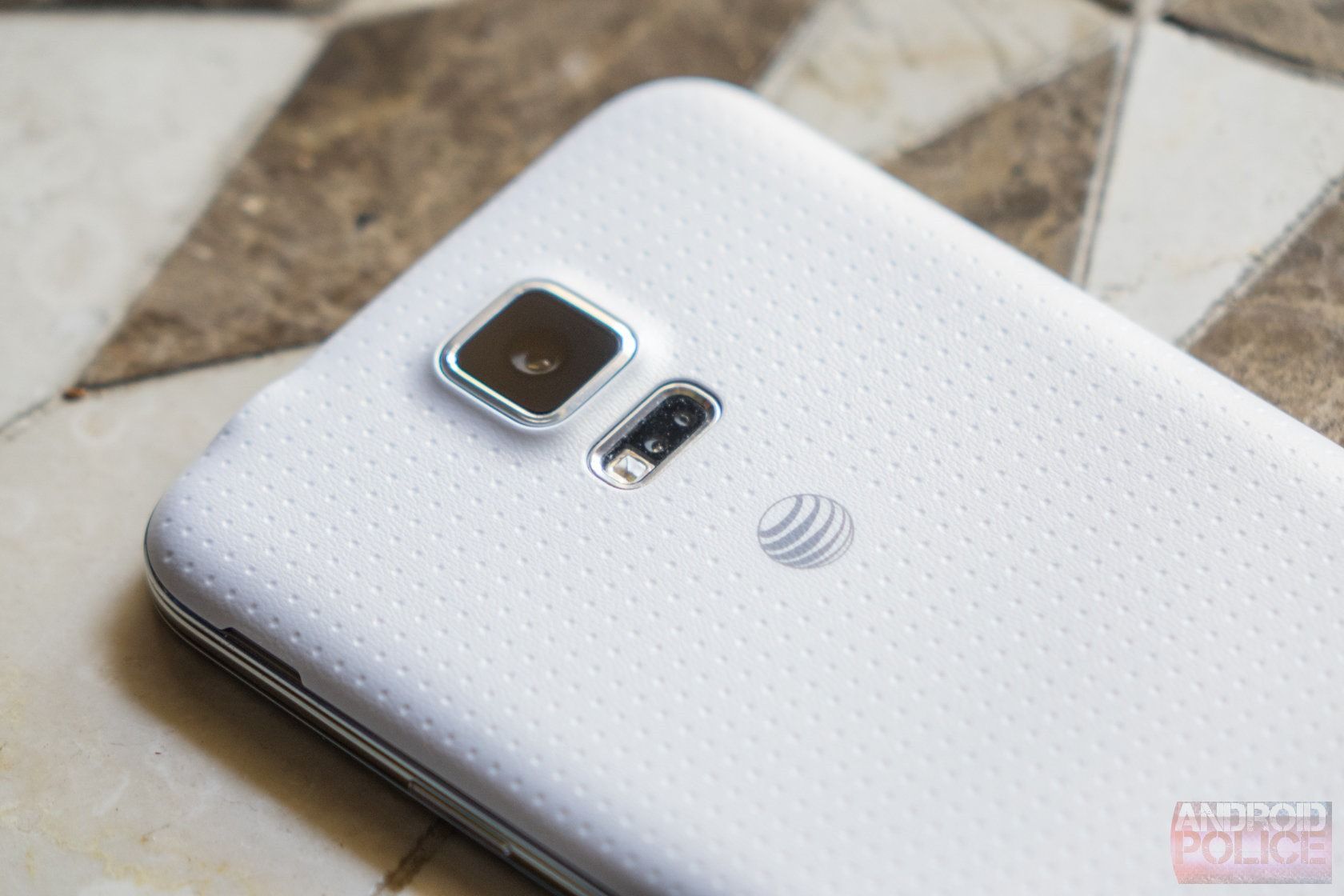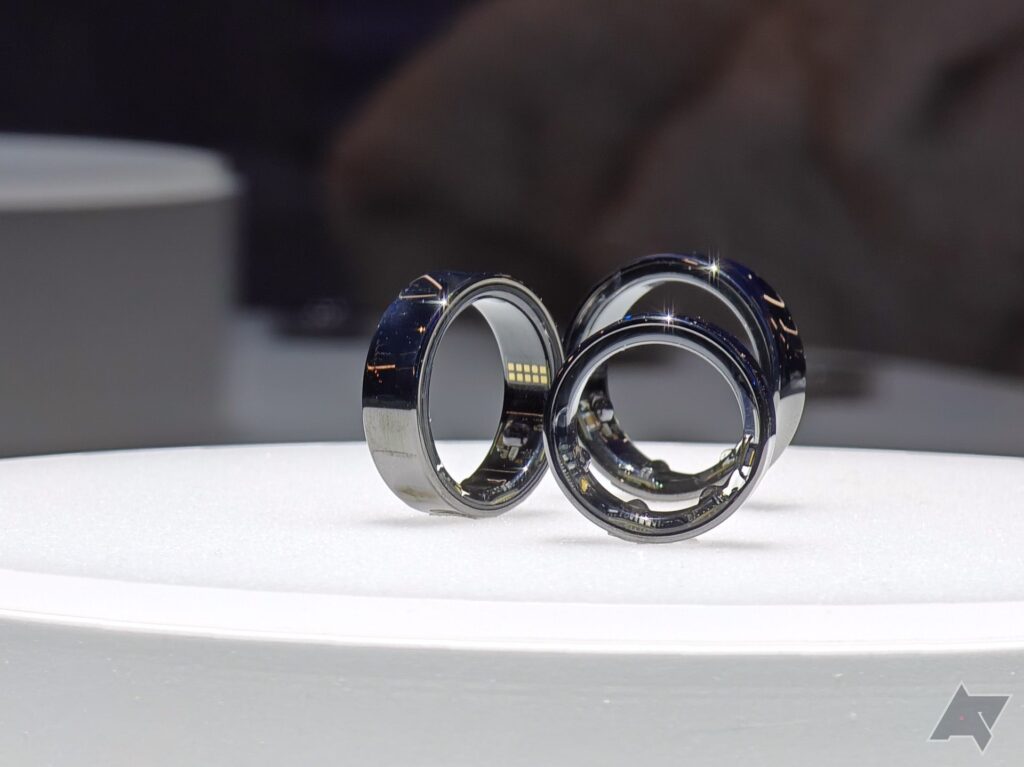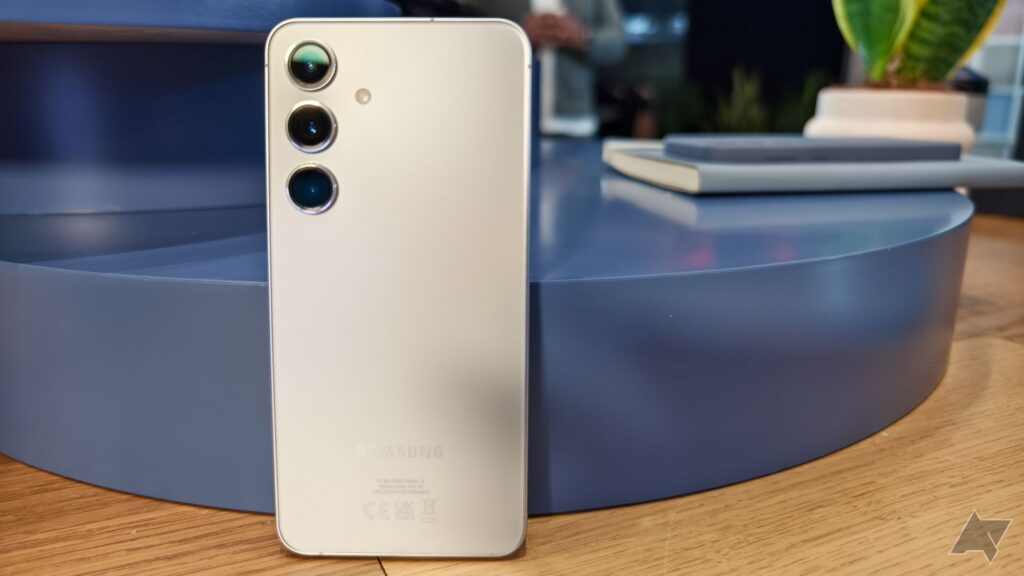In the illustrious year of 2014, Samsung, the maestro of modern technology, released the Galaxy S5. With its metal frame exuding a sophisticated air and a pearl-white matte finish that begged to be touched, the S5 was more than just a great smartphone; it was a conversation starter, a fashion statement, and occasionally, a source of perplexity.
Yes, Samsung may have taken a page from their playbook in terms of design, but who needs reinvention when you’re already ahead of the game? The device captured the hearts and minds of tech enthusiasts everywhere with its innovative features, from the revolutionary fingerprint scanner to an inbuilt heart rate monitor.
Ten years later, the S5 may have been discontinued, but it still holds a special place in the hearts of many Samsung fans. Let’s unlock some memories and look at the bygone era of the Galaxy S5.
1 Design and display
A tale of familiarity with a dash of innovation
Looking almost identical to its predecessor, the Galaxy S4, Samsung didn’t exactly reinvent the wheel with the S5’s design. The S5 boasted a metal frame, giving it a sturdy touch and class you could feel with your hand. The S5, with its pearl-white matte surface, felt good and provided a reliable grip, ensuring it didn’t slip away. The rounded rectangle shape and the central home button gave the S5 the facelift it needed to keep things interesting. Regarding external controls, Samsung stuck to its tried and tested formula, the power button on the right, and the headset jack up top.
Sporting a screen of up to 5.1 inches, this 1080p AMOLED beauty may not have been the crème de la crème of displays, but it sure held its own. You see, it still clung to the Samsung Diamond Pixel layout, which, if you’re counting, only boasted two subpixels per pixel instead of the usual three per pixel found in top-notch LCDs. But, hey, who needed that extra subpixel in 2014, anyway? The all-so-familiar menu button was replaced by the modern trio of Recent, Home, and Back. Home became a physical button while the others nestled comfortably into capacitive touch.
Samsung didn’t stop there. They threw in a nifty little feature called Adaptive Display, claiming to analyze incoming lights and the contents you’re viewing to optimize color saturation, sharpness, and range. So, while the S5’s display may not have been perfect, it was undoubtedly a loyal companion in the ever-changing smartphone technology landscape.
2 Performance and platform
A speed demon of its time
With its 2.5GHz quad-core Qualcomm Snapdragon 801 processor, the S5 was a bad boy at the top of its game, tearing through tasks faster than you can say Samsung Galaxy S5. And with 2GB of RAM backing it up, multitasking felt like a breeze. The phone had 16GB or 32GB of storage onboard, plus the option to add up to a whopping 128GB extra through microSD, so hoarding all the photos, memes, and apps your heart desired was not a tall order.
Samsung Galaxy S24 Ultra review: Still the best, unless you take photos
Without any meaningful changes, Samsung’s latest phablet feels like a do-over for last year’s smartphone
Onto the software side, the GS5 ran on the now-retro Android 4.4 KitKat, but Samsung couldn’t resist adding their special sauce with the latest proprietary TouchWiz interface.
3 Camera
Capturing life’s moments with color and clarity
The 16-megapixel marvel utilized Samsung’s ISOCELL image sensor technology, which offered greater color accuracy and sharper images by reducing electrical crosstalk between pixels. When it came to snapping pics, the S5 was a real champ. Automatic mode delivered clear and colorful photos, especially under the warm embrace of natural light.
But let’s not forget about the video capabilities. Capturing moments in stunning 1080p resolution was a breeze. And if you were feeling particularly fancy, you could even switch to the UHD video, also known as 4K, for an extra dose of crispness.
However, there was one minor hiccup — the camera could take up to three seconds to start up, which felt like an eternity in the world of spontaneous photography. Despite this tiny drawback, the S5’s camera was still packed with features to make any shutterbug smile. With real-time HDR and myriad filters and modes, capturing the perfect shot was just a tap away.
4 Battery
The simpler times when 2,800mAh felt like more than enough
The GS5 promised to keep up with your busy lifestyle without requiring constant pit stops for recharging with its 2,800mAh removable battery. But if you still found yourself in a pinch, the Ultra Power Saving Mode was there to save the day, capable of squeezing a whooping 24 hours of standby time from a 10% battery.
This feature was not just impressive — it was downright magical. When activated, the S5 transformed into a grayscale powerhouse. All your non-essential features would be shut down, restricting access to just a handful of apps.
5 Connectivity
A smartphone that could talk to just about anything with a signal
The GS5 was like the social butterfly at a party, mingling effortlessly with any network it encountered. Wi-Fi a/b/g/n/ac support? Check. Wi-Fi Direct and DLNA? Double check. And if you ever needed to download a file in a flash, you just had to activate the Download Booster and watch as your downloads zipped along at lightning speed, thanks to simultaneous LTE and Wi-Fi downloading that could do over 30MB.
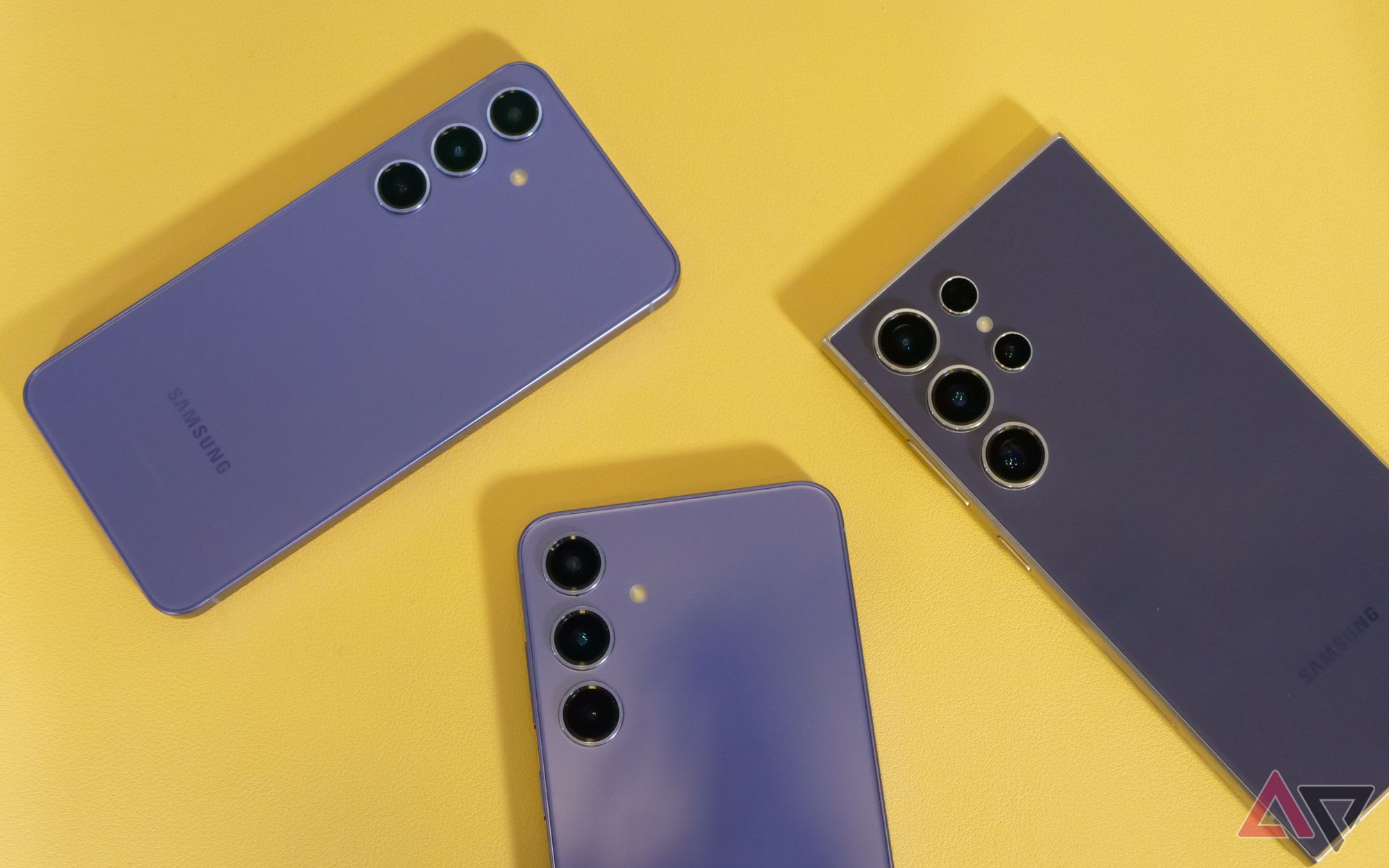
Does the Samsung Galaxy S24 have UWB?
As usual, Samsung’s kept the goodies away from its smallest flagship
Bluetooth 4.0 + LE was also on board, syncing with the latest smartwatches and wearables. Plus, there was ANT+ for all the fitness enthusiasts who wanted to throw off personal trainers. And with NFC present, pairing with other devices was as easy as a wrist flick. S Beam and Android Beam were also on standby, ready to handle file transfers safely.
On to carrier compatibility, or lack thereof. The S5 came in four LTE versions, each tailored to specific carriers. Swapping SIM cards between networks was not something you would do — you had to be loyal to your carrier. And what if you happened to pick the wrong model? Well, tough luck because switching carriers just wasn’t happening. It was annoying, sure, but at least you had an IR blaster to control your TV with the Samsung Remote app.
6 Fingerprint scanner
More secure, more futuristic
One of GS5’s unique selling points was the fingerprint scanner. This came in handy for those tired of drawing complete patterns or entering pesky passwords to unlock their phone. Nestled within the home button, the fingerprint scanner required a vertical swipe across the button to register your print.

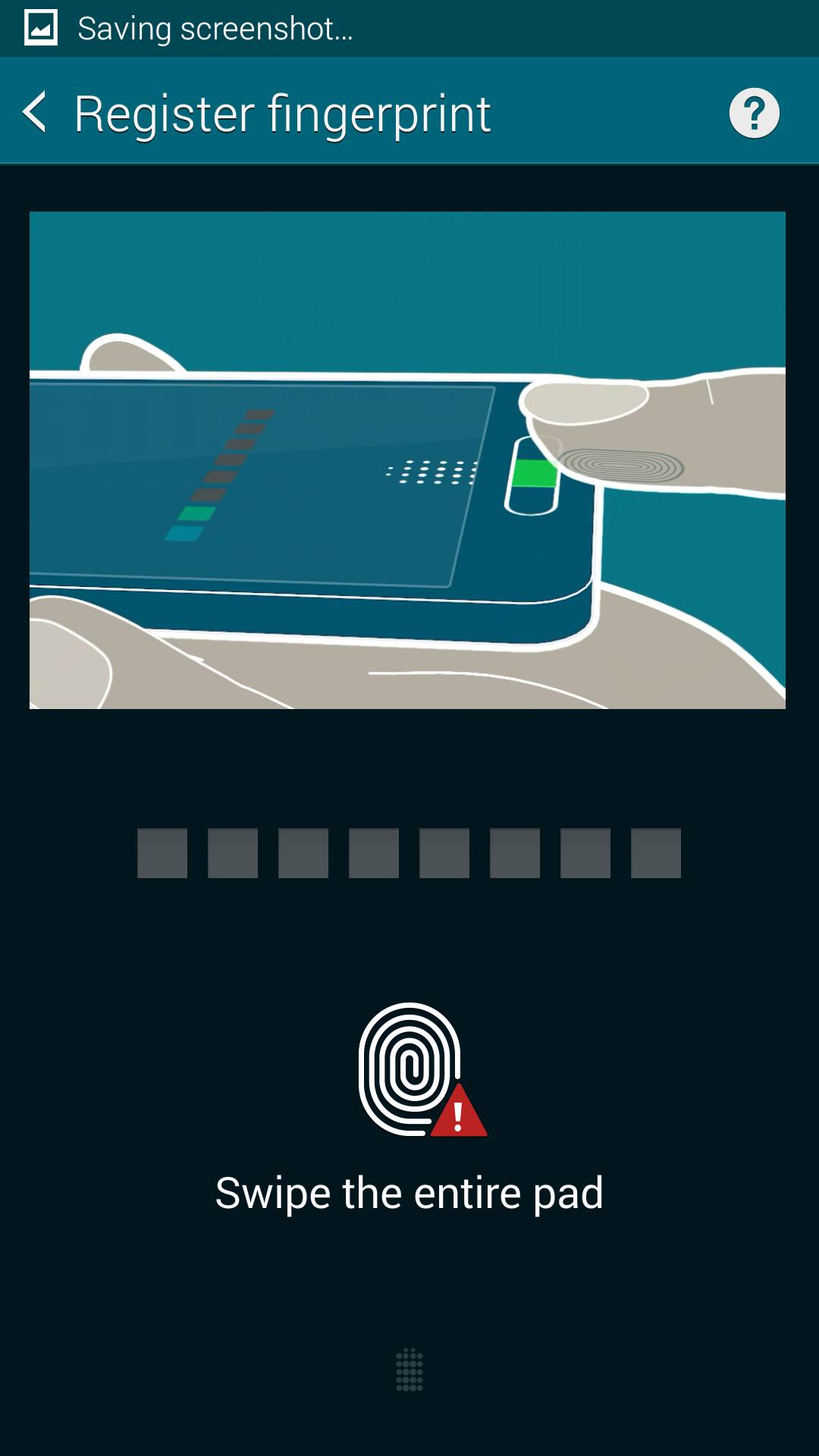
Thanks to Samsung’s forward-thinking approach, you could use it for more than just unlocking your phone. They released the SDK for the Galaxy S5, opening up the fingerprint technology to developers far and wide. With the Pass API within the SDK, developers could integrate fingerprint scanning into their applications on Google Play, ushering in a new era of biometric security. From securing your PayPal transactions to granting access to your Samsung account, the fingerprint scanner was the key to a world of hassle-free authentication.
7 Heart rate monitor
Keeping you in check, one heartbeat at a time
Samsung outdid themselves with this one, integrating a heart rate sensor into the same housing as the camera’s LED flash. Alongside the heart rate monitor, Samsung’s S Health app turned your phone into a veritable health hub. The S Health app was like having a personal trainer in your pocket, from tracking your workouts to counting your steps and even monitoring your diet.
Accessing the heart rate monitor was a breeze — launch S Health, tap Heart Rate, and follow the prompts to place your finger on the sensor. If you habitually checked your heart rate, S Health would keep track of your readings over time. You could also look back at your heart rate history at hourly, daily, and monthly intervals. And for those who craved even more details, the app’s log provided a daily breakdown of readings, complete with exact times and average heart rates.
A testament to Samsung’s ingenuity
There is no denying that the Samsung Galaxy S5 had a profound impact on the smartphone landscape during its glory days, and its influence still echoes through the halls of modern devices. The fingerprint scanners, the emphasis on health and fitness, and the advanced camera systems were all a testament to the enduring legacy of Samsung’s masterpiece. Its hardware may now seem quaint compared to today’s behemoths, but Samsung dared to dream. And with their most recent offering, the Samsung Galaxy S24, it’s evident Samsung’s commitment to innovation has only grown stronger, with each new product pushing the boundaries of what’s possible in mobile technology.

